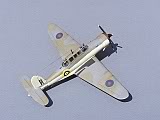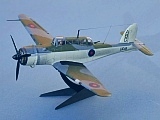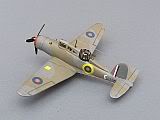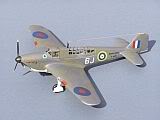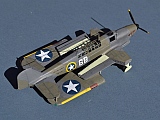Royal Navy Aircraft -
Skua, Roc, Fulmar Buffalo and Kingfisher
![]()
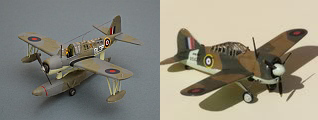
This is the Octopus 1/72 limited run kit from Czech company Pavla. Far exceeding the Frog version below, it is nevertheless not an easy build.
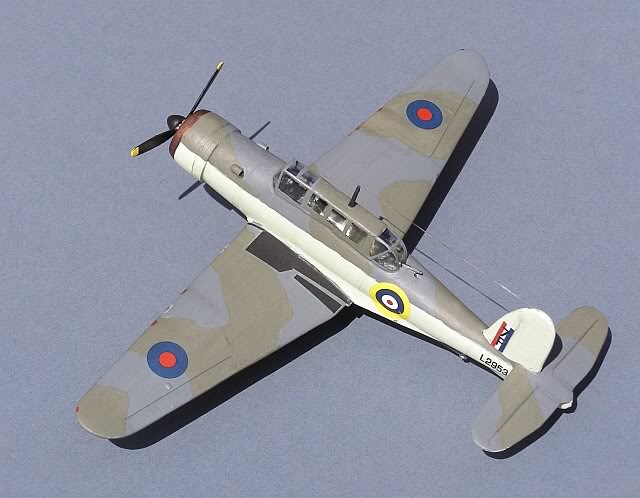
The Skua holds a number of "firsts" -
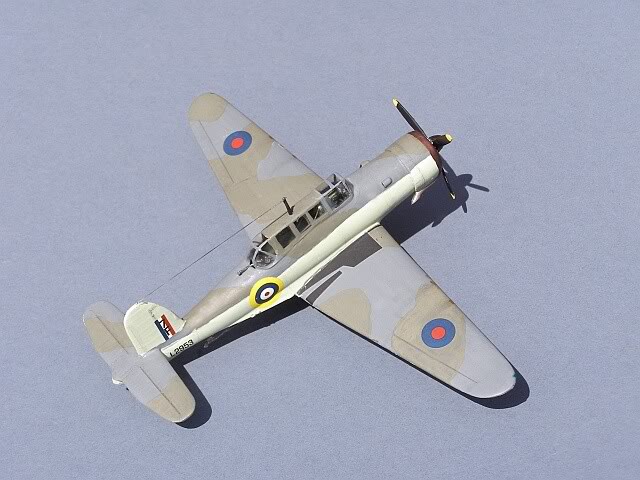
A typical product of the Air Ministry's obsession with multi-

The subject of this particular model participated in the controversial Royal Navy
attacks on the French Mediterranean fleet in July 1940, aimed at preventing the French
Fleet's use by the Axis forces. Flown by Lt J M Christian RN, with Observer Sub Lt
Gore-
This is the old Frog Kit (also available from Revell, Novo and Eastern Express etc.) with some spare decals from the Octopus kit above. It's not a very accurate representation, particularly beneath the wings, where the storage for the single dive bomb is completely missing. Its wing chord is also woefully too narrow (compare with the Octopus kit above).
The Skua is mainly remembered for its performance during the Norwegian campaign, where despite being flown with outstanding skill and bravery, it was clearly outclassed by faster German fighter and bomber aircraft from the start. Nevertheless, Skuas also made a significant contribution in other theatres, particularly during the desperate fighting at the beaches of Dunkirk and around Calais, where a handful of aircraft from 801 Sqn provided intense air support to the trapped British & French troops.
Pavla 1/72

This limited run kit is not the easiest, cheapest, or indeed most accurate kit around. But let's be honest; Roc kits are pretty thin on the ground!
After the decision to withdraw RAF Fighter aircraft from France and retain them for
home defence, a hotch-
Like its contemporary, the Bolton Paul Defiant, the Blackburn Roc followed the unsuccessful
concept of the turret-

Nevertheless, the Roc did participate in some of the crucial events of the early
war, including the defence of the Home Fleet's base at Scapa Flow, the Norwegian
Campaign (when several Rocs saw their only sea-
Only one confirmed victory is credited to the Roc, a Ju88 shot down during the Dunkirk evacuations by an 806 Sqn Roc, (Mdshipman A G Day RN).
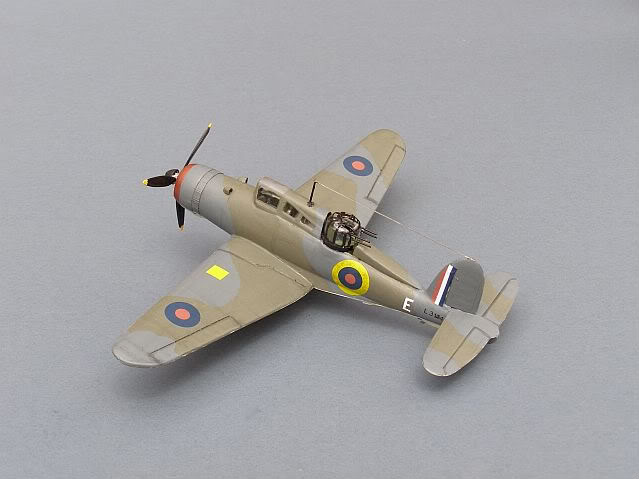

The excellent Vista Fulmar kit has also appeared in Revell, SMER and Airfix boxes. Not perfect, but recommended! (link to build page)
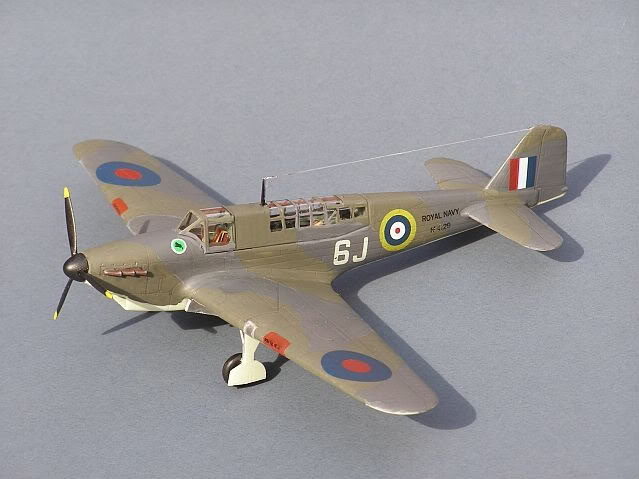
Although it was certainly no star performer, by an accident of history, the Fairey Fulmar was in the right place when it was needed, and is actually the Fleet Air Arm's highest scoring fighter. Developed as a replacement for the Skua in the Fighter/Reconnaissance role, it saw most success in the Mediterranean, defending convoys against Italian and German bombers, but also played pivotal roles in the hunt for the Bismark, the Arctic convoys, the Indian Ocean and North Africa. It also provided night fighter cover for the famous Taranto attack, destroying seven Italian fighters.

Derived from the unsuccessful Fairey Battle fast bomber, the Fulmar was developed in great secrecy and saw front line service from June 1940 until 1944, including development as a night fighter. When it first appeared it was a big disappointment to FAA pilots, since it was already outclassed by the opposing Axis aircraft due to its size and the requirement to carry an Observer, but compared with its predecessors, its heavier armament, excellent range/endurance and improved speed were certainly welcome.
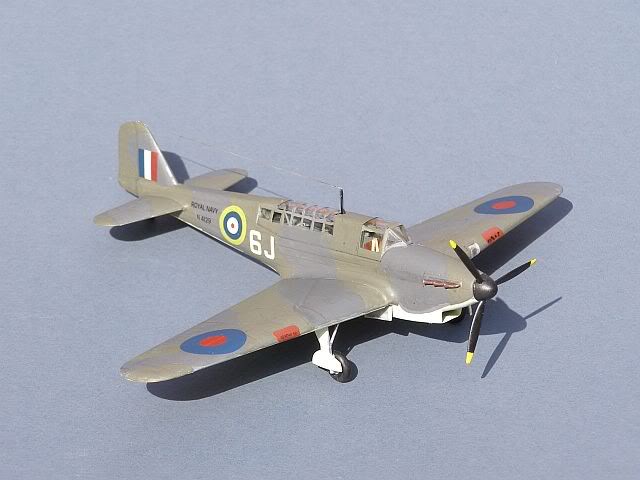
Fulmars scored 112 kills between Sept 1940 and Aug 1942, more than a third of the total FAA victories during the entire war. The aircraft modelled here was flown by Lt Donald Gibson RN, Senior Pilot of 803 Sqn, in HMS FORMIDABLE. It was lost on 18 Apr 1941 after Gibson was wounded during an attack by Italian aircraft. Although he was able to land back onboard, his arrestor hook parted and the aircraft went overboard. Gibson was quickly rescued, but sadly his Observer was killed.

This is the SMER issue, with the Airwaves brass etch wing fold added:

During Operation Torch, the Allied Invasion of North Africa, participating Fleet
Air Arm aircraft were temporarily re-

Matchbox's Buffalo is a reasonable kit, although its undercarriage is very fragile and the canopy framing is overly heavy. This is a Chinese Matchbox issue, built out the box, with minor additions inside the cockpit. Decals are a mix from the kit and my spares box.
The Buffalo was an unmitigated disaster in UK service; chosen by the USN over its
direct competitor, the Grumman Wildcat, it was a reasonable design, but let down
by Brewster's lack of volume manufacturing expertise and dodgy cost cutting tactics
on behalf of both manufacturer and customer, such as the use of worn out second hand
ex-
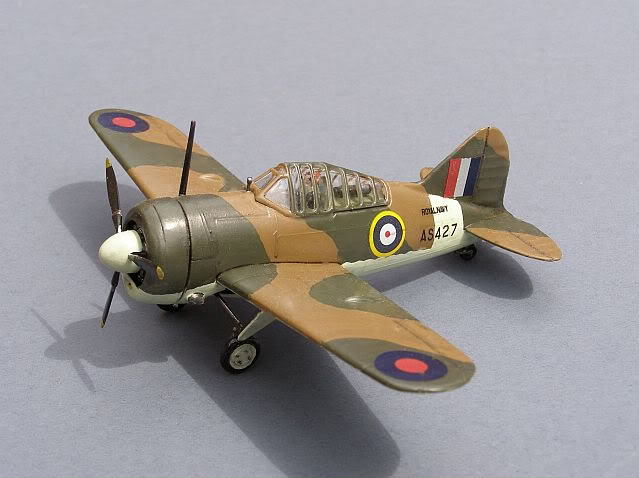
RN Buffaloes were part of French & Belgian orders taken over by the British Purchasing
Commission in Washington -
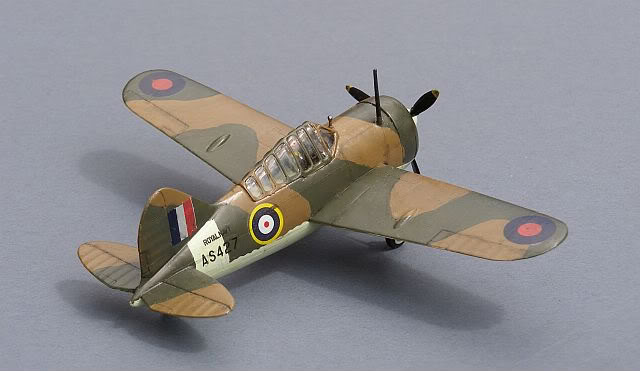
It wasn't a bad aircraft; the Finns used the Buffalo with great success against both Germans and Russians; but only after they had rebuilt them to their own satisfaction. A case of poor build standards and sloppy procurement, British disappointment was repeated 2 years later with the Brewster built Corsair III, leading to a US Senate Investigation of Brewster, amidst (unproven) accusations of sabotage, Nazi sympathisers and enemy agents within their workforce.
The old Airfix Kingfisher is still a nice kit, seen here with Aeromaster decals for a FAA training machine. (Link to build page)
The Kingfisher entered USN service as an observation scout aircraft in 1940,but also
saw widespread service as a search and rescue aircraft. Over 100 were supplied to
the Royal Navy from the summer of 1942 under lend-
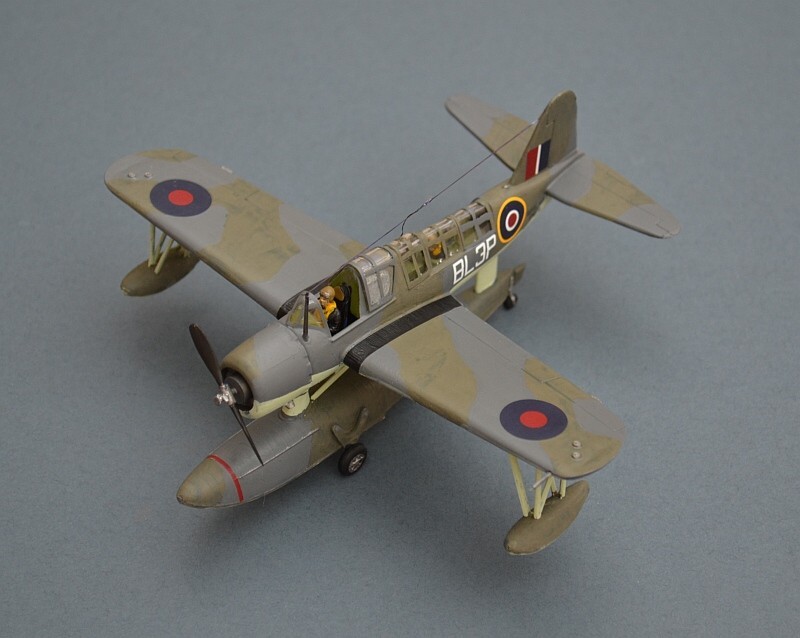
Able to fly from either land (with a conventional fixed undercarriage) or from catapult equipped ships at sea (when fitted with floats), Fleet Air Arm Kingfishers were operated from British Merchant Cruisers in the South Atlantic and Eastern Fleet, as well as being used as trainers in the West Indies and at home.
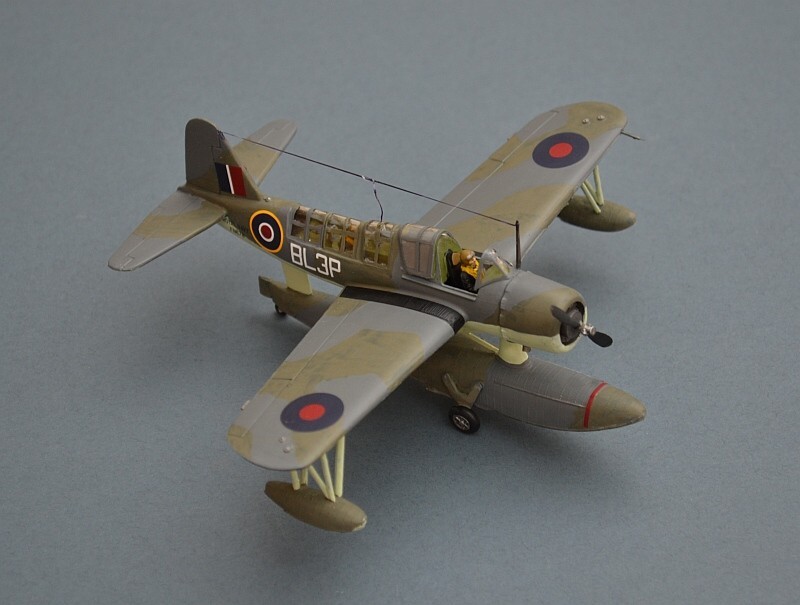
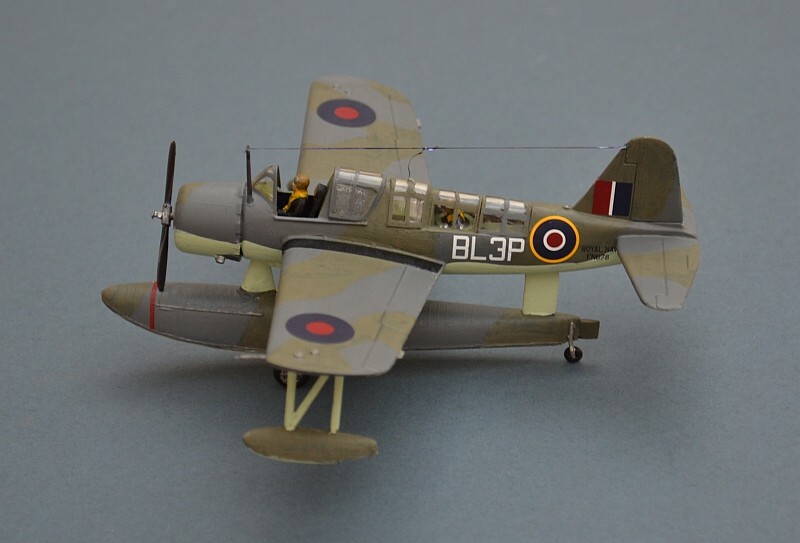
Skuas began WW2 in bright aluminium finishes which were gradually toned down, losing the colourful fuselage carrier codes and eventually gaining camouflage on their upper surfaces.
This Skua, using the FROG kit and Special Hobby decals, represents an aircraft from HMS ARK Royal at the outbreak of the war, shortly before 803 sqn scored the first confirmed British air to air victory of WW2
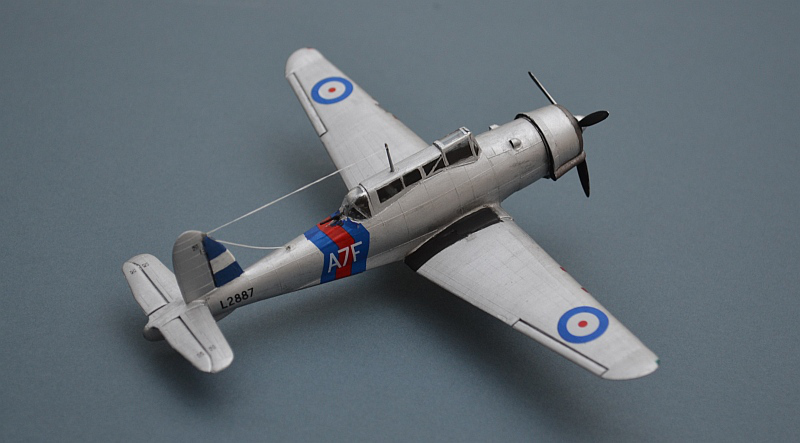
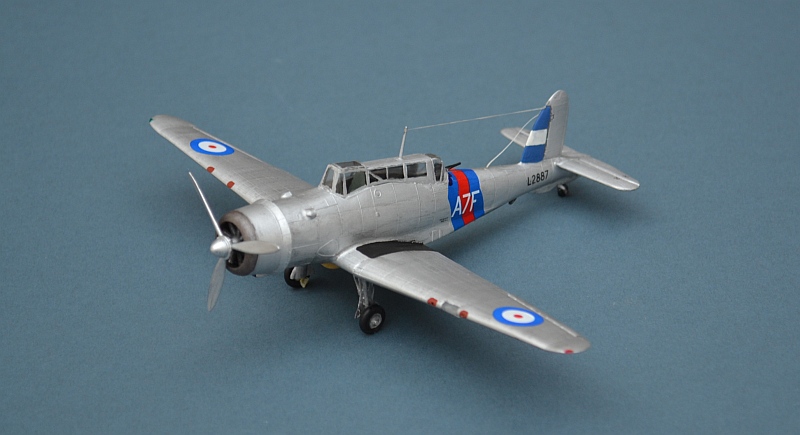
Blackburn Skua Mk II, 803 Sqn Fleet Air Arm, HMS ARK ROYAL, July 1939
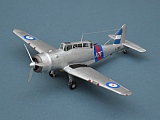
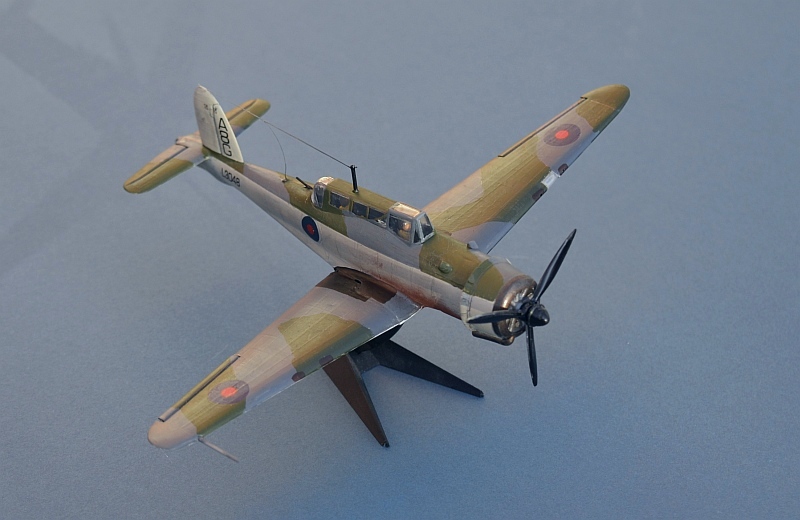

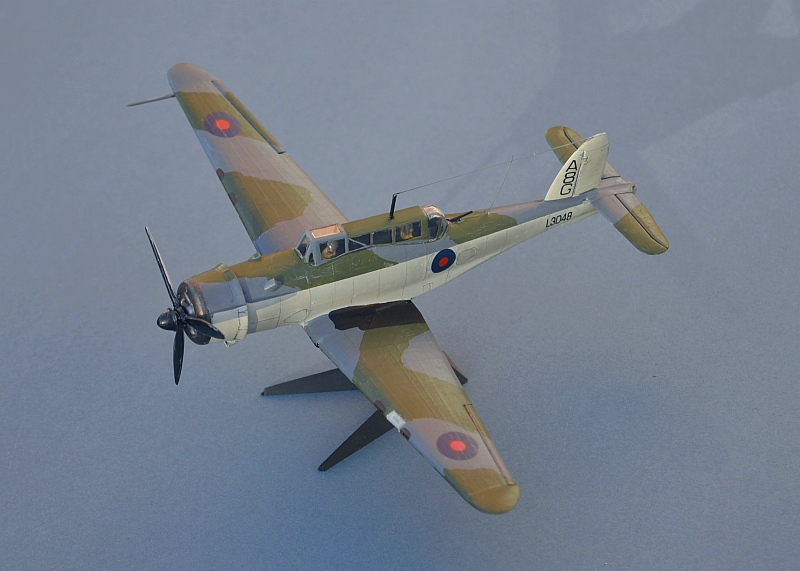
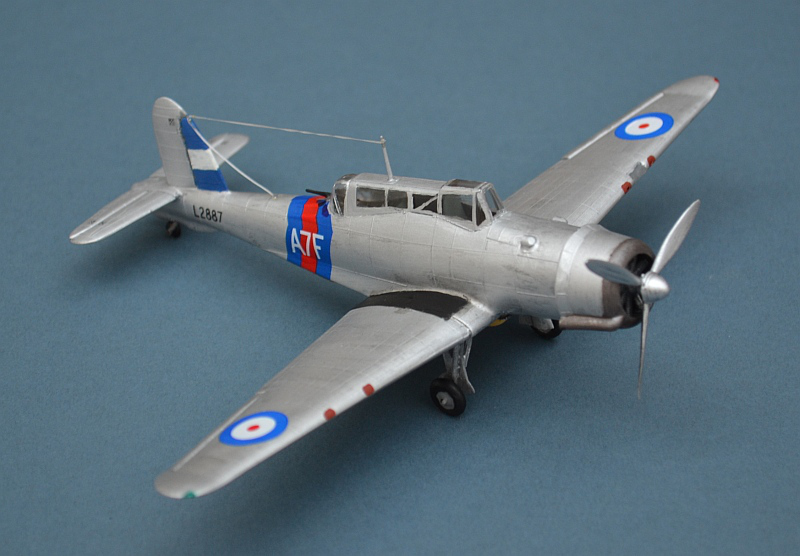 Top of Page
Main Index
Top of Page
Main Index
